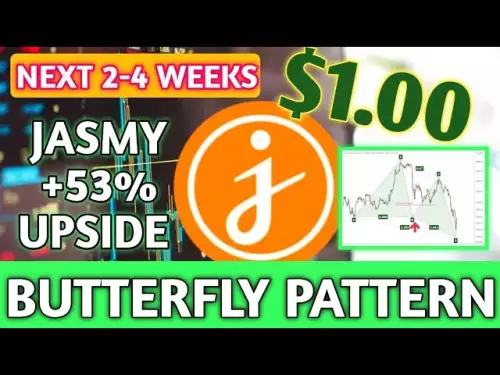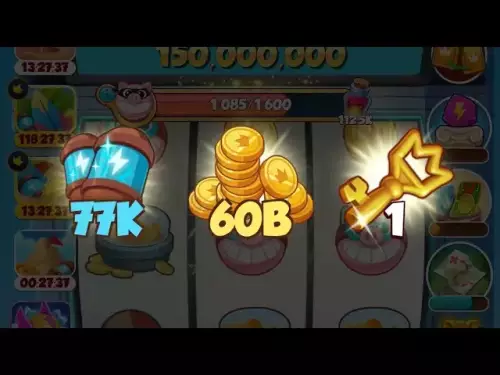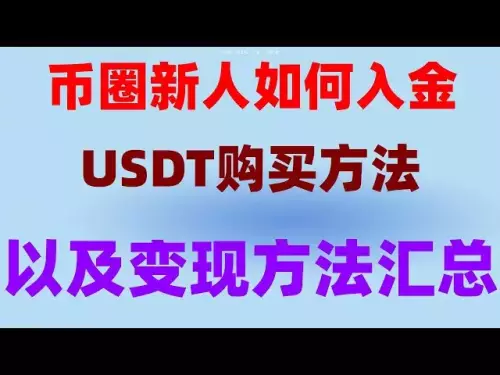-
 Bitcoin
Bitcoin $109500
-2.65% -
 Ethereum
Ethereum $4367
-7.16% -
 XRP
XRP $2.866
-4.11% -
 Tether USDt
Tether USDt $1.001
0.08% -
 BNB
BNB $834.2
-3.96% -
 Solana
Solana $186.7
-8.35% -
 USDC
USDC $0.9998
0.00% -
 TRON
TRON $0.3407
-4.70% -
 Dogecoin
Dogecoin $0.2086
-8.02% -
 Cardano
Cardano $0.8338
-6.54% -
 Chainlink
Chainlink $23.32
-8.27% -
 Hyperliquid
Hyperliquid $42.61
-6.17% -
 Ethena USDe
Ethena USDe $1.001
0.04% -
 Stellar
Stellar $0.3846
-4.40% -
 Sui
Sui $3.346
-7.20% -
 Bitcoin Cash
Bitcoin Cash $542.2
-6.29% -
 Avalanche
Avalanche $23.25
-8.12% -
 Hedera
Hedera $0.2314
-5.09% -
 UNUS SED LEO
UNUS SED LEO $9.576
-0.02% -
 Litecoin
Litecoin $109.6
-5.50% -
 Toncoin
Toncoin $3.120
-4.62% -
 Shiba Inu
Shiba Inu $0.00001198
-6.25% -
 Uniswap
Uniswap $9.635
-10.26% -
 Polkadot
Polkadot $3.731
-7.97% -
 Dai
Dai $1.000
-0.01% -
 Cronos
Cronos $0.1536
-1.37% -
 Bitget Token
Bitget Token $4.465
-3.57% -
 Monero
Monero $263.8
-3.16% -
 Aave
Aave $316.1
-8.24% -
 Ethena
Ethena $0.6228
-8.35%
What is a Weighted Moving Average (WMA) in crypto?
The Weighted Moving Average (WMA) gives more weight to recent prices, helping crypto traders spot trends faster than with SMA.
Aug 06, 2025 at 07:35 am
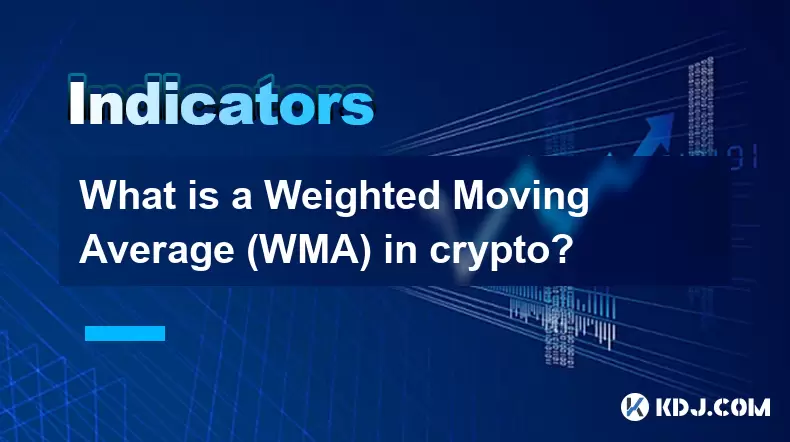
Understanding the Weighted Moving Average (WMA) in Cryptocurrency Trading
The Weighted Moving Average (WMA) is a technical analysis tool used by traders in the cryptocurrency market to identify trends by assigning more importance to recent price data. Unlike the Simple Moving Average (SMA), which treats all data points equally, the WMA emphasizes recent prices through a weighting mechanism. This makes it more responsive to new information, which is critical in the fast-moving crypto markets. The formula for WMA multiplies each price by a weight factor, with the most recent price receiving the highest weight, and older prices receiving progressively smaller weights.
For example, in a 5-day WMA, today’s price is multiplied by 5, yesterday’s by 4, and so on, down to the oldest price in the period, which is multiplied by 1. The sum of these weighted prices is then divided by the sum of the weights (1+2+3+4+5 = 15 in this case). This process ensures that the latest price action has a greater influence on the average, allowing traders to react more quickly to shifts in momentum.
Why Use WMA Instead of SMA in Crypto Analysis?
Cryptocurrency prices are known for their high volatility and rapid price swings. Because of this, lagging indicators like the SMA may not provide timely signals. The WMA reduces this lag by giving greater significance to recent data, making it more suitable for short-term trading strategies. When a sudden price spike or drop occurs in Bitcoin or Ethereum, the WMA will reflect this change faster than the SMA, enabling traders to enter or exit positions with better timing.
Another advantage is that WMA can help filter out market noise. By focusing on recent price movements, it reduces the impact of older, potentially irrelevant data. This makes it particularly useful during periods of consolidation or when a breakout is suspected. Traders using WMA can more accurately assess whether a price movement is a temporary fluctuation or the start of a new trend.
How to Calculate WMA Step by Step
To compute a WMA, follow these steps:
- Choose a period length (e.g., 5 days).
- Collect the closing prices for the last 5 days.
- Assign weights in descending order: the most recent price gets weight 5, the previous day 4, and so on.
- Multiply each day’s closing price by its corresponding weight.
- Sum all the weighted prices.
- Calculate the sum of the weights (for 5 days: 1+2+3+4+5 = 15).
- Divide the total weighted price sum by the sum of weights to get the WMA.
For instance, if Bitcoin’s closing prices over 5 days are $30,000, $30,500, $31,000, $32,000, and $33,000 (most recent last), the calculation would be:
(30,000×1) + (30,500×2) + (31,000×3) + (32,000×4) + (33,000×5) =
30,000 + 61,000 + 93,000 + 128,000 + 165,000 = 477,000
Divide by 15: 477,000 / 15 = $31,800 (WMA value).
This result is higher than the SMA of the same period, reflecting the stronger influence of recent upward movement.
Implementing WMA on Trading Platforms
Most cryptocurrency trading platforms, such as TradingView, Binance, or Coinbase Pro, support WMA as a built-in indicator. To apply it:
- Open a price chart for your desired cryptocurrency.
- Click on the “Indicators” button or search bar.
- Type “Weighted Moving Average” and select it from the list.
- Adjust the period (e.g., 10, 20, 50) based on your trading strategy.
- Choose the price source (usually closing price).
- Confirm and apply the indicator to the chart.
Once applied, the WMA line will appear overlaid on the price chart. Traders can customize the color and thickness for clarity. Some platforms allow multiple WMAs with different periods to be displayed simultaneously, enabling comparison between short-term and long-term trends. For example, a 10-day WMA crossing above a 50-day WMA could signal a bullish trend shift.
Using WMA for Entry and Exit Signals
Traders use WMA crossovers and price interactions to generate signals. A common strategy involves monitoring the relationship between price and the WMA line:
- When the crypto price crosses above the WMA, it may indicate the start of an uptrend, suggesting a potential buy signal.
- Conversely, a price crossing below the WMA might signal a downtrend, prompting a sell or short position.
- Another method uses two WMA lines: a short-period and a long-period. A buy signal occurs when the shorter WMA crosses above the longer one; a sell signal when it crosses below.
These signals are particularly effective in trending markets. However, in sideways or choppy markets, false signals may occur. To reduce risk, traders often combine WMA with other indicators like Relative Strength Index (RSI) or Volume to confirm the strength of a signal.
Limitations and Considerations When Using WMA
While WMA is more responsive than SMA, it is not immune to whipsaws—rapid, false reversals that can trigger losing trades. Because it emphasizes recent data, sudden price spikes due to news or manipulation can distort the WMA temporarily. Traders should avoid relying solely on WMA without context from broader market conditions.
Another consideration is the choice of period. A shorter WMA (e.g., 5 or 10) reacts quickly but may generate more noise. A longer WMA (e.g., 50 or 100) is smoother but may lag behind fast price moves. Finding the right balance depends on the trader’s time frame and risk tolerance. Backtesting WMA strategies on historical crypto data can help determine optimal settings.
Frequently Asked Questions
What is the difference between WMA and EMA in crypto trading?
The Exponential Moving Average (EMA) also prioritizes recent prices but applies a smoothing factor that decays exponentially. WMA uses a linear weighting system, meaning each prior price gets a fixed step down in weight. EMA reacts even faster to price changes than WMA, making it more sensitive but also more prone to false signals in volatile crypto markets.
Can WMA be used for day trading cryptocurrencies?
Yes, WMA is well-suited for day trading due to its responsiveness. Traders often use a 9-period or 20-period WMA on 5-minute or 15-minute charts to identify intraday trends. When combined with volume analysis, WMA can help confirm breakout validity during high-liquidity periods.
Is WMA effective for long-term crypto investing?
While WMA is primarily a short-to-medium-term tool, long-term investors may use a 100-day or 200-day WMA to assess major trend directions. However, due to its sensitivity, it may require filtering with other long-term indicators like on-chain metrics or macroeconomic data.
How do I adjust WMA settings for different cryptocurrencies?
Different cryptos exhibit varying volatility levels. For highly volatile altcoins, a slightly longer WMA period (e.g., 14 instead of 10) may reduce noise. Stablecoins or less volatile assets might work better with shorter periods. Always test settings in a demo environment before live trading.
Disclaimer:info@kdj.com
The information provided is not trading advice. kdj.com does not assume any responsibility for any investments made based on the information provided in this article. Cryptocurrencies are highly volatile and it is highly recommended that you invest with caution after thorough research!
If you believe that the content used on this website infringes your copyright, please contact us immediately (info@kdj.com) and we will delete it promptly.
- Heritage Distilling's Token Deal: A Bold Balance Sheet Strategy
- 2025-08-26 06:45:14
- Coinbase Hack, Solana Shenanigans, and Wallet Woes: What's a Crypto OG to Do?
- 2025-08-26 06:45:14
- Bitcoin, Institutional Adoption, and Volatility: A 2025 Perspective
- 2025-08-26 08:05:14
- MAGACOIN, Ethereum, and XRP Growth: What's the Buzz?
- 2025-08-26 08:30:13
- ETHZilla's Bold Moves: Share Buyback and Ethereum Holdings Under Scrutiny
- 2025-08-26 08:05:14
- Cardano, ADA Price, and the ETH L2 Meme Coin Frenzy: What's Next?
- 2025-08-26 08:50:13
Related knowledge
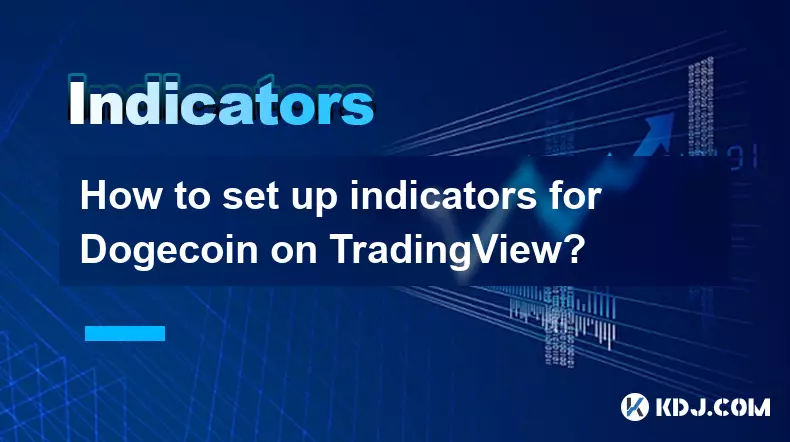
How to set up indicators for Dogecoin on TradingView?
Aug 25,2025 at 04:23pm
Understanding Dogecoin and TradingView1. Dogecoin, initially created as a meme-based cryptocurrency, has evolved into a widely traded digital asset. I...

What does it mean when the +DI and -DI cross frequently in the DMI indicator but the ADX is flattening?
Aug 11,2025 at 03:15am
Understanding the DMI Indicator ComponentsThe Directional Movement Index (DMI) is a technical analysis tool composed of three lines: the +DI (Positive...

What does the sudden appearance of a "dark cloud cover" candlestick pattern during an uptrend indicate?
Aug 13,2025 at 11:35am
Understanding the 'Dark Cloud Cover' Candlestick PatternThe dark cloud cover is a bearish reversal pattern in technical analysis that typically appear...

What does it mean when the moving average, MACD, and RSI all send buy signals simultaneously?
Aug 11,2025 at 01:42pm
Understanding the Convergence of Technical IndicatorsWhen the moving average, MACD, and RSI all generate buy signals at the same time, traders interpr...

What does it mean when both the KDJ indicator and the RSI show overbought signals simultaneously?
Aug 13,2025 at 11:35am
Understanding the KDJ Indicator in Cryptocurrency TradingThe KDJ indicator is a momentum oscillator derived from the Stochastic Oscillator, widely use...

What does it mean when the price is trading above the SAR indicator but the red dots are densely packed?
Aug 09,2025 at 11:49pm
Understanding the SAR Indicator and Its Visual SignalsThe SAR (Parabolic Stop and Reverse) indicator is a technical analysis tool used primarily to de...

How to set up indicators for Dogecoin on TradingView?
Aug 25,2025 at 04:23pm
Understanding Dogecoin and TradingView1. Dogecoin, initially created as a meme-based cryptocurrency, has evolved into a widely traded digital asset. I...

What does it mean when the +DI and -DI cross frequently in the DMI indicator but the ADX is flattening?
Aug 11,2025 at 03:15am
Understanding the DMI Indicator ComponentsThe Directional Movement Index (DMI) is a technical analysis tool composed of three lines: the +DI (Positive...

What does the sudden appearance of a "dark cloud cover" candlestick pattern during an uptrend indicate?
Aug 13,2025 at 11:35am
Understanding the 'Dark Cloud Cover' Candlestick PatternThe dark cloud cover is a bearish reversal pattern in technical analysis that typically appear...

What does it mean when the moving average, MACD, and RSI all send buy signals simultaneously?
Aug 11,2025 at 01:42pm
Understanding the Convergence of Technical IndicatorsWhen the moving average, MACD, and RSI all generate buy signals at the same time, traders interpr...

What does it mean when both the KDJ indicator and the RSI show overbought signals simultaneously?
Aug 13,2025 at 11:35am
Understanding the KDJ Indicator in Cryptocurrency TradingThe KDJ indicator is a momentum oscillator derived from the Stochastic Oscillator, widely use...

What does it mean when the price is trading above the SAR indicator but the red dots are densely packed?
Aug 09,2025 at 11:49pm
Understanding the SAR Indicator and Its Visual SignalsThe SAR (Parabolic Stop and Reverse) indicator is a technical analysis tool used primarily to de...
See all articles





















